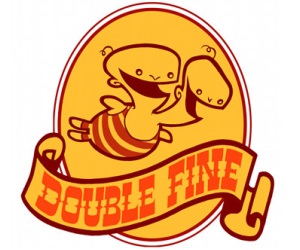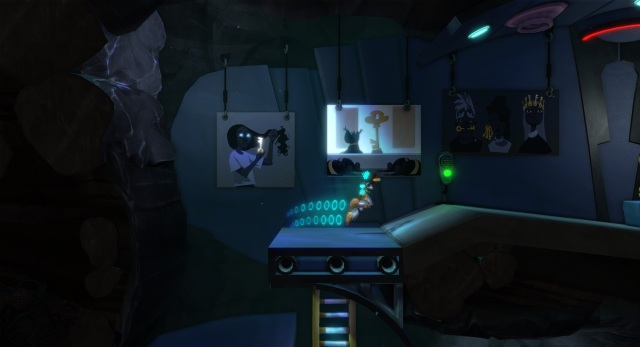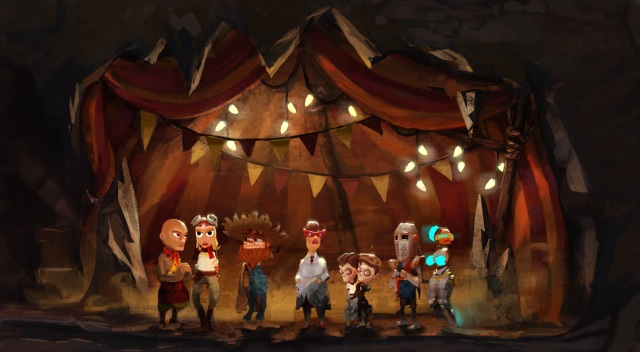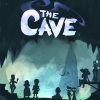 Game: The Cave
Game: The Cave
Developer: Double Fine Games
Publisher: SEGA
Available on: Xbox 360, PlayStation 3, Wii U, Windows PC
Reviewed on: Xbox 360
When Maniac Mansion was released in 1987 it was a revolutionary title in the Adventure Gaming genre, and in video gaming in general. Adventure games were just beginning to ride a wave of popularity that would see the genre become the most successful in PC gaming in the late eighties and early nineties. The game, created by Ron Gilbert, would solidify this golden age, and set down many benchmarks for almost every graphic adventure that came after. Gilbert also created the mega-hit, iconic Monkey Island series, but after several runaway successes at Lucasarts Games he left the company in 1993 and, despite working as a consultant on several titles, never created his own adventure game again.
That is, until now. Partnering with Double Fine Games – run by another Lucasarts graduate, Tim Schafer – he has returned to the genre in which he made his name after a wait of approximately twenty years. But of course, things don’t stay the same in video games for long, so the adventure / puzzle genre has changed dramatically. But then The Cave isn’t your average adventure game, and those involved in its development aren’t your average game designers.

The story begins with a selection of seven heroes, from whom you must pick three to enter the titular Cave. This is an idea directly lifted from his earlier success Maniac Mansion, and something you don’t see often enough in adventure games. All the characters have their own backgrounds and reasons for wanting to go into The Cave, which is rumoured to grant those who conquer it what they most desire in the world. We have the brave – or not so brave – Knight, The Indiana Jones-esque Adventurer, the eerie Tim Burton-style Twins, the Buddhist Monk, the Scientist, the strange Hillbilly and the high-tech Time Traveller. Upon entering, the Gift Shop assistant in The Cave lets the trio in and they must all conquer the biggest challenges from their own life within the walls of The Cave itself. The story is a bit loose to begin with, but with each sub-section of The Cave being personalised to one of the characters you have picked to play as, their personalities are developed further as you play on.
As we progress and delve deeper and deeper into The Cave, we find cave paintings, which form the memories of each of the characters you control, telling us more information about their back-story and reasons for being there – most of which are more than a little suspect, revealing that none of these so-called heroes are entirely perfect. This is where a lot of the dark humour in the game comes from – the less-than-exemplary morals and methods in achieving their goals in The Cave. But that isn’t to say that it is all doom and gloom; there is a lot of dark humour, but the game is plenty silly as well, with the sense of humour that Gilbert shaped in his earlier games certainly showing its presence here, too.
Graphically, the game is relatively simplistic – presented in a side-scrolling platform style, but the sprites and environments are all drawn with care and are full of personality. By keeping the presentation in two dimensions, the designers can control what the player sees and direct the action a little more, and it also avoids the issue that many three-dimensional adventure games have had in the past when the puzzles themselves should be the challenging part, rather than navigating the world and exploring the environments. The characters are all animated smoothly; their individual “caricature” style, and even in the way each one moves differently, allows us to grasp a little more understanding of their characters – the attention to detail really is that great. For instance, despite being presented as your typical dashing cavalier, the Knight always stands nervously and looks far from brave. It is little touches like this that make the game more involving and likeable.
The sound design is also particularly effective, although Double Fine certainly employ the less-is-more stance for large stretches of the game. Music is used sparingly, where it will have the most impact, and is generally atmospheric rather than dramatic. Music is also used in the different character-specific sections in order to help set the scene better – for instance Circus music for the Hillbilly who works at a Circus, and James Bond-inspired music for the Scientist who works in a nuclear bunker. These emphasise the character a little further, and also – especially in the case of the Scientist – add a bit of humour to a character who could seem a bit too serious otherwise. Voices are also used sparingly – none of the protagonists speak, but we hear snippets from The Cave itself who acts as a narrator of sorts, and comments humorously on the sometimes reprehensible actions of the players.
The gameplay is designed with co-operation in mind – whether that be with two or three players, or just one. In controlling three different characters, each of whom have their own unique skill that will allow them to do different tasks and reach areas that none of the others can, players will have to switch between them and make use of teamwork in order to solve the majority of the tasks in the game. There is no split-screen option, so you have to leave characters at certain positions, and then switch between who you wish to control in single player, or between who the camera focuses on in multiplayer, by using simple up, down, left, right controls on the D-pad. This can get a little irritating at times, as two players can’t be moving independently and working on different aspects of a task at once, but perhaps this would have been problematic to implement. It would make the game an even more co-operative experience, allowing you to synchronise your movements with more precision, but maybe constraints in the engine prevented this.
The game does consist of a lot of light platforming, with the players moving back and forth in the sprawling cave, but this is more in the way of exploration than pure platforming. This works in the same way as a regular adventure game, in the sense that players will explore an area and find certain items, but have to back-track to an earlier point where they will be able to use said items. This adds a little frustration to proceedings, as there can be rather long treks back and forth, and whereas in a point-and-click adventure you can simply click where you want to move to, in The Cave you have to jump, run and swim yourself backwards and forwards. Add to that the fact that if you fall a little bit too far, or jump a jump that is too ambitious, you will die and re-appear a little bit further back along the path. This becomes increasingly annoying when you have to climb up and down ladders and ropes and want to make things quicker by jumping – but end up wasting time by dying. If the game allowed you to drop from great heights without punishment, that might eliminate some of the back-tracking irritation.

The puzzles are generally straightforward enough – they will test your mind without leaving you stumped for too long. Few of them are of the ridiculous, illogical school of thought that hampers lesser adventure games, and most of the puzzles can be figured out by trying out a few different options. Many depend on positioning each of your three heroes in a particular spot and performing an action that will allow you to switch to one of the others and complete the task at hand. One example is where two of the heroes need to pull levers at opposite ends of an island, which will allow the third to open a door that is otherwise inaccessible. These require some lateral thinking, but won’t have you pulling your hair out or screaming at the stupidity of the solutions.
The multiplayer aspect of the game adds to the longevity of the experience, as it is always more fun to solve puzzles and re-play a title with different friends – seeing how well you work together with different people and how differently your brain processes work, but another thing that will keep you coming back is the variety in the characters. As mentioned before, sections of gameplay differ for each character, so you will need to play through the game at least three times in order to play them all. And on top of that, you have to try and collect all of the memory fragments found in cave paintings for each character. This isn’t annoying, as once you’ve played the game once you’ll become quicker and can navigate The Cave more easily – and you’ll want to find out the storylines behind each unique character. On top of that, there are two different endings for each hero too, dependant on a choice you have to make at the end of the game. This will add to the length of your experience, and keep you coming back again to try different choices and see aspects you missed before.

VERDICT: The Cave is a new take on a genre that has been very rigid and set in its ways over the years. Adding a social, co-operative aspect to the game is a brave move, but it is a success as it makes players think differently than they would when controlling just one hero. Teamwork is vital, and coordinating all of your heroes is necessary whether you play alone or with friends. The fact that the multiplayer is couch co-op is a nice touch, as talking with your friends and figuring out the solutions to puzzles was always one of my fondest memories of playing classic adventure games. It is somewhat of a shame that online co-op wasn’t also included, as some solo players will be put off by not being able to link up with other gamers over a network. But the game is still a great overall experience in single player too.
You will want to find out more about the interesting and unusual characters, and see the motivations behind their quest. The twists in the tale will surprise you a little, and this isn’t a cute and cuddly cartoon like it might appear – it has a real biting sense of dark humour. But that is what gives it the trademark Ron Gilbert / Double Fine feel, and what makes it stand out from other run-of-the-mill adventures. This is a welcome return to the genre for a legendary designer, and although some of the design choices and limitations may not allow the game to be the perfect co-operative puzzle experience, there is no other title out there right now that plays quite like The Cave, or packs in as much character. You might not find what you desire most in the world with The Cave, but it has certainly been worth the extended wait.








